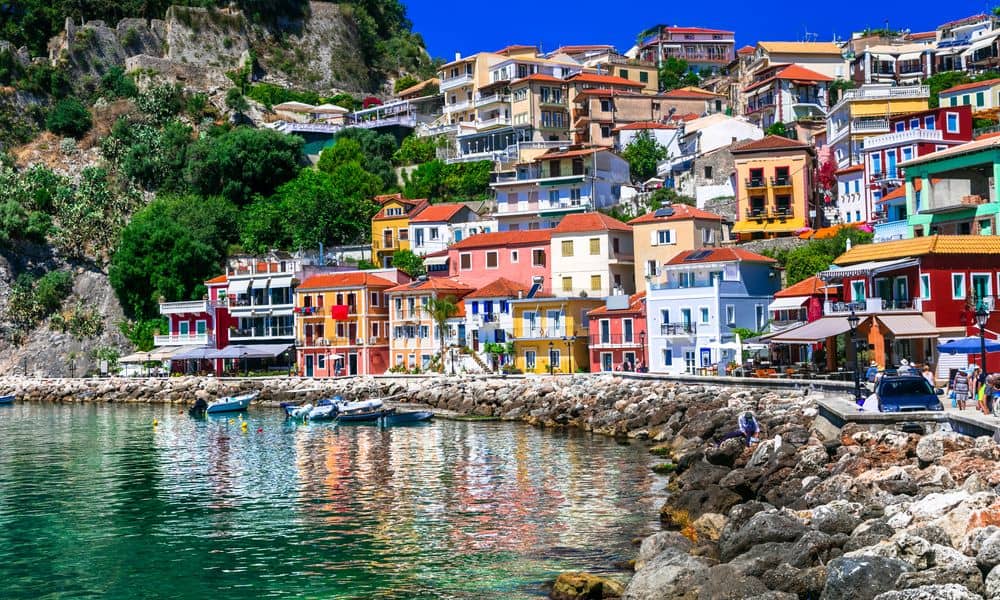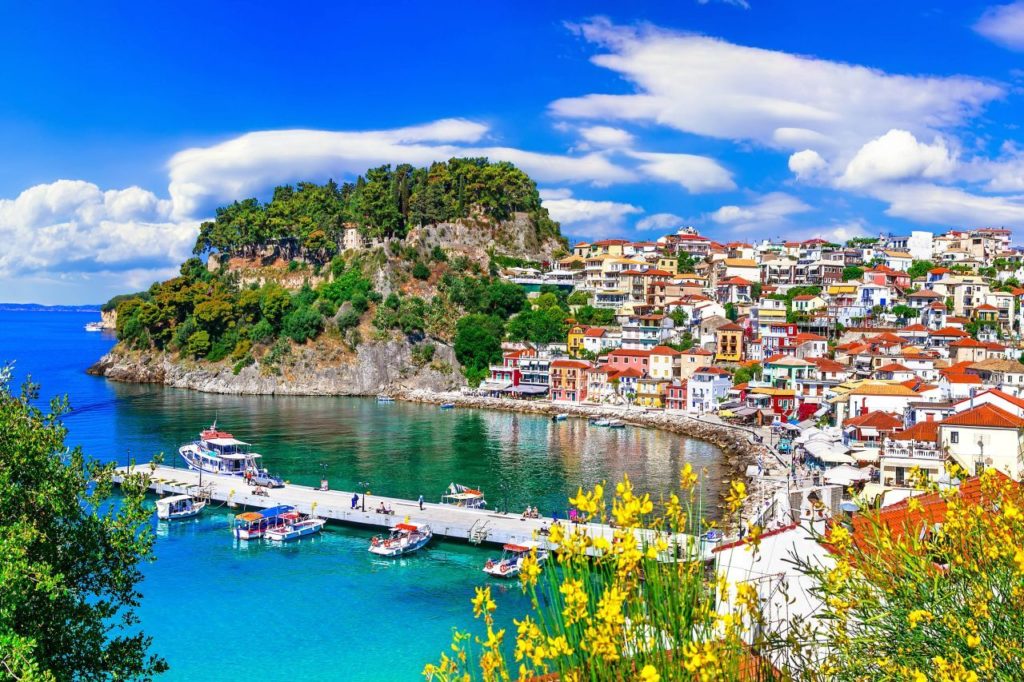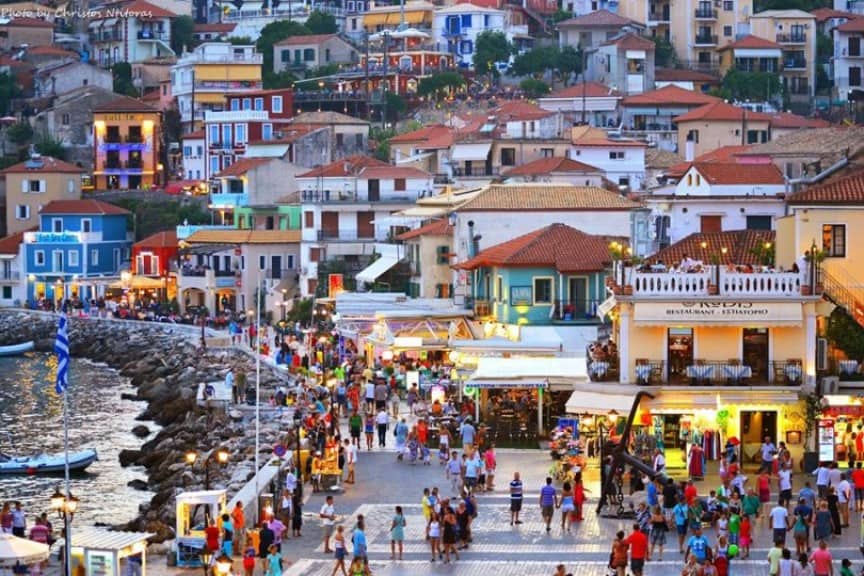Parga is an Epirus gem, located in the northwestern area of Preveza, it is amphitheatrically built and overlooks the Ionian islands of Paxos and Antipaxos.

Infused with the architectural style of the Venetians (low-rise, colourful mansions with ceramic-tile roofs that overlook the sea, a castle and cobblestone streets) who once occupied the area, yet with lush greenery mainly made up of pine, olive and fruit trees and turquoise-emerald waters reminiscent of an exotic land, Parga attracts discerning, mainly summertime visitors who value aesthetic beauty from around the world.
Elinda Labropoulou, owner of the boutique hotel Villa Rossa, gives us an insider’s guide for making the most of a visit here.

Be a Water Baby
Although it’s part of the mainland, Parga has a dreamy island-like feel to it. The large, sandy, organised beach of Kryoneri is the most popular spot for swimming, although there are numerous bays and coves to enjoy along Pargas’ coastline. You’ll find Piso Kryoneri on one end and the coastline of Valtos on the other, from where you can enjoy a view of the castle from behind and the historic monastery of Vlaherna.
Ai Yiannaki and Lichno on the south side are also great places to swim. Heading up along the path leading to Syvota stop for a swim at Sarakiniko, Karavostasi and Arilla.
From Kryoneri, rent a pedalo or swim to the Panagia (Virgin Mary) islet across where you can visit the same-named church with its tall white bell tower. Take your mask and snorkel along to explore the rocks around the islet.
“The list of beautiful beaches and isolated coves close to Parga is endless and include the nearby Valtos and Lychnos,” Labropoulou says. “These are both walking distance and there are many boats from the main pier taking sun-seekers to these and other swimming spots. It is a spectacular coastline so make sure to see as much of it as possible!”
Right across Parga, almost at arm’s length, are the Paxous islands, known for their crystalline waters and elegant ambience. Lambropoulou suggests taking a boat across to visit, at least one for a few hours. “Paxos is a magnificent and peaceful island to explore, with some astounding views, especially as one approach by boat to its main town, Gaios, a natural fjord."
According to Greek mythology, Poseidon created the island by striking Corfu with his trident, so that he and his wife Amphitrite could have some peace. Most day trips stop in the smaller island of Antipaxos as well, which boasts very fine sandy beaches. Boat trips also include a trip to the lovely Blue Caves with their diaphanous waters,” she says.
Top Things To See & Do

The Venetian Castle
Parga’s most visited site - and for good reason, as apart from its own impressive beauty it offers a spanning view over the Ionian sea and of Valtos beach on the south side - was used for centuries to protect inhabitants from invaders.

The first settlement on the high rock stretches at least as far back as the 13th century. It has been twice destroyed by Ottomans and once by pirates, before being reconstructed for a third time by the Venetians in 1572. It offers panoramic views of Parga and the surrounding area. Hikers can enjoy an (ideally early morning or sunset-time) walk up to the castle, which gives the opportunity of seeing local life - shops, houses with lovingly-maintained gardens, and wild nature.

Stroll Along the Seafront Promenade
Especially idyllic after sundown is a walk along the sea towards the giant anchor (a classic local meeting spot). Stop for ozonic air-infused ouzo at one of the small eateries along the way.

Village Life
Head to Pargas’ scenic villages to acquaint yourself with local life, history, scenery, and culture. At Margariti visit the Folk Museum, at Anthoussa, head to the waterfalls and at Aghia see the only remaining windmill in the area, one of 10 that existed in the 1960s.
Visit the beautifully preserved castle of Ali Pasha which stands between Anthoussa and Aghia, from where you can enjoy a sweeping view of the Ionian islands, or hop on the tourist train that offers a tour of the area.

A Journey to the Underworld
According to mythology, Antiquity’s famous river Styx, the Nekromanteion, is the place where the dead began their descent to the underworld with the help of a blind ferryman. Located on the banks of the Acheron river this is also where people in ancient times travelled to talk to loved ones after their passing. Award-winning crime author Anna Zouroudi describes its history thus:
“Seekers (...going to the Nekromandeion) arrived at the oracle from all over Greece and underwent preparatory rituals for a period of days, in a programme of sensory deprivation. Kept in near silence, they were fed funeral meals of pork, beans and rye bread, and lupin seeds to induce mild cyanosis – a deathly blue tinge in the lips and fingertips...
“When the priests deemed them ready, the seekers were dosed with hallucinogenics and a blood sacrifice was made. They were then slowly led through the twists and turns of a labyrinth of stone tunnels, halting along the way at three iron gates – the Gates of Hades. The Oracle itself is an underground chamber of ingenious construction.
“With walls over 3m thick, its arches diffuse sound waves, so the chamber itself is disturbingly, oppressively silent. Guided down into the darkness, the seekers would have expected the ghosts of Hades to rise through fissures in the floor, but their anticipation of meeting the spirits they sought was most likely met using mechanical means – archaeologists have found the remains of chains and pulleys which were probably used to propel ‘manifestations’ around the chamber.”
Reaching the Nekromandeion is an easy drive by car and many of the travel agencies in Parga organize excursions.
“The springs of the Acheron River are definitely worth a visit,” Labropoulou says, “as it’s an area of outstanding natural beauty close to the villages of Kanalaki and Glyki. Apart from the natural beauty, the springs of Acheron are known worldwide for their mythological contents as in ancient Greek mythology, Acheron was one of the five rivers of the Greek underworld.”

Special festivals
On the eve of August 14th, a Panigiri (festival) takes place on the Panagia islet. The following day Parga celebrates the Varkarola, which commemorates the homecoming of Parga’s locals who were forced to leave when Parga had been sold by the English to Ali Pasha of Ioannina.
*Many thanks to Elinda Labropoulou for her insider tips on Parga, where she runs Villa Rossa Hotel.

